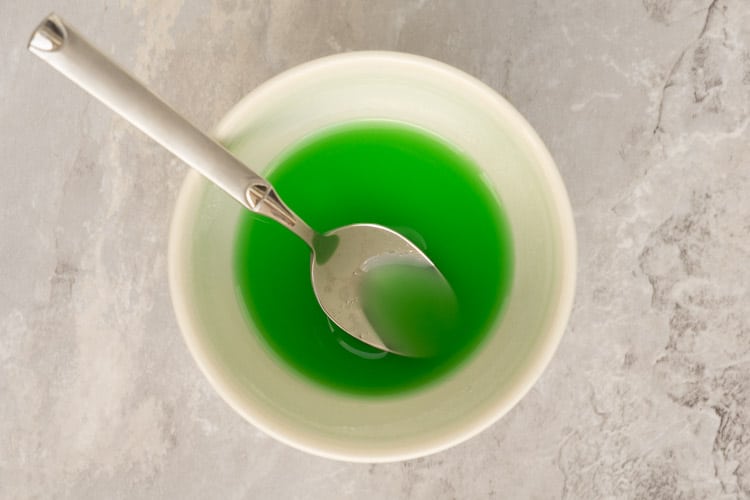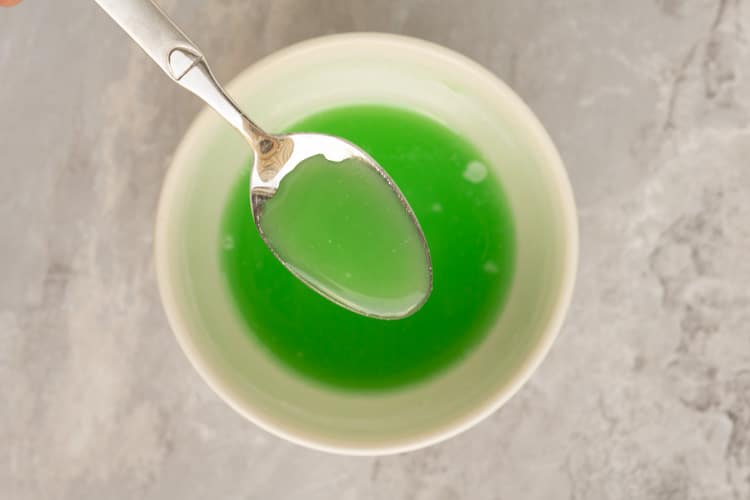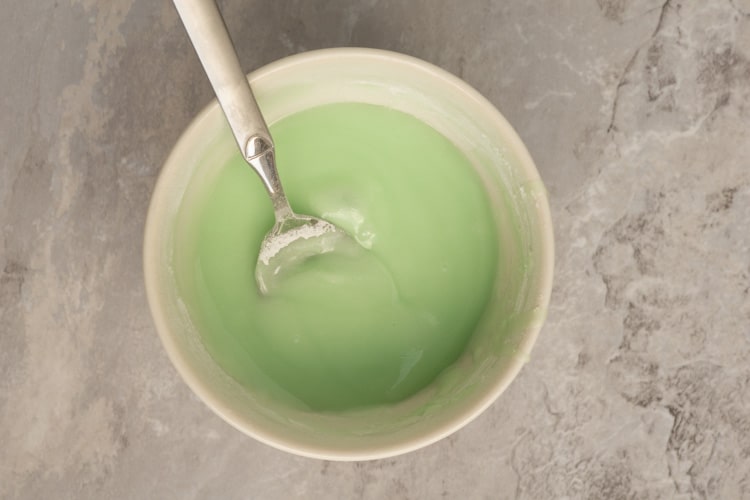Learn the science behind:

The Science of Powdered Sugar / Glacé Icing
Have you ever made icing to decorate your cookies, donuts, or maybe a cake? Were you also amazed at just how much powdered sugar you had to add to only a very little bit of water? It’s common for recipes to contain 10x the amount of powdered sugar as they do water!
What’s going on here? How and why can you add so much sugar into so little liquid?
What is a powdered sugar icing?
As is so often the case, terminology for icings (or glazes) isn’t very consistent… Here, we’re talking about an icing that can be used to decorate donuts, cakes, cookies, etc. After it sets it’s clearly visible (that is, it doesn’t seep into the product). Some might call these a glaze, others an icing, but the distinction between the two is pretty small.
The type of icing we’re discussing here is one that relies on just two ingredients (with a few optional ones): powdered sugar + liquid. That liquid can be water in the simplest form, but also corn syrup, cream, etc. Some will call this icing a glace icing, a sugar cookie icing, or a simple icing. We’re calling it a powdered sugar icing :-).
Note: icing sugar, powdered and confectioner’s sugar are all the same thing! Since we’re talking about an icing here, we’ll be using the term powdered sugar going forward, (icing sugar icing would sound quite confusing).
What happens when making powdered sugar icing?
The core ingredients of this very simple icing are powdered sugar and water. The functionality of powdered sugar is essential here, so let’s zoom in on this ingredient first.

What is powdered sugar?
From a chemist’s perspective, powdered sugar is the same as ‘regular’, e.g. granulated sugar. These white sugars are all made up of a molecule called sucrose (also called saccharose). Powdered sugar is made from granulated sugar by milling the sugar crystals down to a very small particle size. Whereas you can easily see the individual crystals in granulated sugar, that is less so for powdered sugar. The individual sugar crystals are on average only 50 microns in size!

Dissolving sugar
When you make a powdered sugar icing, you’re mixing sugar and water. At the start of this process, most of the powdered sugar will dissolve in the water. Sugar dissolves very well in water. At room temperature, you can dissolve about twice the weight of the initial water. So you can dissolve over 200 grams of sugar in only 100 grams of water!
Since powdered sugar is made up of tiny sugar crystals, they dissolve very easily. They have a very large surface area that can easily interact with the water. When dissolving, the tiny sugar crystals will break down into individual molecules (which are each a lot smaller than the initial crystals!). These molecules are then surrounded by water, they’ve dissolved.

Packing sugar crystals
You can dissolve a lot of sugar in water. However, at some point, the liquid will be saturated. That is, there is no more space in the water for more molecules to dissolve. At room temperature, this happens when you’ve added approximately twice the weight of the water in powdered sugar to your icing.
This happens because of all those sugar molecules. Each sugar molecule is surrounded by water molecules and these hold onto each other. Once every water molecule is surrounding a sugar molecule, it can’t surround a new molecule anymore.
From this point onwards any extra sugar will no longer dissolve. Instead, the crystals will remain intact and will nestle themselves in between the water and dissolved sugar molecules. You now have a mixture of sugar water + sugar crystals dispersed throughout. Because these powdered sugar crystals are so small they can fit quite snuggly in the sugar water and you can add a lot of them.
Why does a big mountain of powdered sugar make just a small puddle of icing?
Have you also wondered how a large volume of powdered sugar gives a relatively small volume of icing? The powdered sugar seems to disappear in front of your eyes. This is because powdered sugar contains a lot of air. It’s also why a bag or box of powdered sugar doesn’t weigh that much. There is a lot of air in between all these sugar crystals
So why is this the case? It’s because of those very small sugar crystals that powdered sugar is made of. They are small, but as a result, there are a lot of them! When you try to stack all these particles you’ll have a lot of air gaps in between the individual sugar crystals. They can’t stack that efficiently and the particles can’t move smoothly alongside each other, they’re stuck in place. All those air gaps take up a lot of space.

When you add powdered sugar to water though, it is a lot easier for those particles to move alongside each other. They are ‘greased’. This enables them to stack up a lot more efficiently, with fewer gaps in between them.
The density of powdered sugar is very low. A large volume doesn’t weigh much. Once you disperse it in water, the density goes up, it can pack more efficiently.
Dissolving sugar also impacts the density of water, a higher sugar concentration increases the density which you can measure using a hydrometer.
Powdered sugar icing properties
You can make a lot of different types of powdered sugar icing, using only those two ingredients! Some are very runny, others are very thick. You can tweak those properties simply be changing the concentrations of sugar & water.
Increasing viscosity
How a liquid, or an icing, flows, can be described using rheology. Rheologists study the flow of all sorts of materials. When an icing is very thin, rheologists will say it has a low viscosity. A very thick icing on the other hand will be called viscous.
The flow behavior of an icing is directly related to the concentration of sugar in your icing. The more sugar, the thicker and more viscous the icing will become. At some point, it will become so firm that it won’t even flow by itself anymore!
So why does this happen? Remember that your icing is made up of water with a lot of sugar crystals dispersed throughout. As long as there’s quite a lot of water these crystals can easily move alongside each other. However, with less and less free water being available, the harder it becomes for these particles to move, they become stuck. This results in the liquid becoming more viscous.
Color changes
All these sugar particles dispersed in the water will also impact the color of the icing! The sugar crystals reflect light in a different way than water does. Because of all their irregular shapes and sizes, the light will be scattered more randomly. This causes the color of the icing to turn a little lighter!

Optimizing the sugar + water ratios
So how do you know you’ve added enough icing sugar to your glaze? Well, that depends on your application and even on your ingredients and environment. On a very humid day, your sugar might have attracted some more moisture, requiring more sugar to make up for the additional moisture.
It’s a matter of continuing to add icing sugar until you’ve reached a perfect consistency.
What happens when setting a sugar icing?
Once you’ve made that icing and applied it to your product, it will have to set. But what makes it set?
It’s the evaporation of water. The water in the top part of the icing will (slowly) evaporate. As a result, the icing becomes even thicker and firmer. It becomes even harder for the sugar crystals to move alongside each other. This is what causes the icing to harden!
Unlike some other types of icing, powdered sugar icing can’t be stretched and easily gets cracks. This is because it mostly consists of tightly packed sugar crystals. They aren’t really connected to each other and haven’t formed a network. That makes it easy for cracks etc. to occur!
Troubleshooting a sugar icing
The advantage of this simple powdered sugar + water glaze? It’s very easy to fix it!
Just add a little water. The water will dissolve some of the sugar and thin out the icing. Take care, you only need very little water compared to the amount of powdered sugar! Don’t add more than 10% of your initial water content (i.e. if you used 10g of water, add max 1g, which is only a few drops).
Continue adding extra powdered sugar. Remember, you need a lot of powdered sugar compared to the amount of water in the icing!

Basic Icing Sugar Glaze/Icing
Use the concepts we discussed above to troubleshoot and perfect your glaze. Vary your moisture and sugar content based on the consistency you're looking for.
Ingredients
- 80-100g Powdered / Icing sugar
- 15 ml water (room temperature)
Instructions
- Take a small bowl and add the water.
- Add 70g of the powdered sugar. Mix it through until you don't have any lumps left.
- In increments of 10g, continue adding sugar until you've obtained the consistency you're looking for.

The donuts on this photo were covered with this glaze containing:
- 75g of powdered sugar - still very runny, gives a thin coating
- 85g of powdered sugar - still a little runny, but sticks to the donut significantly better already
- 95g of powdered sugar - makes a thick, non-translucent glaze
Notes
Want to color your icing/glaze? It's best to do so at the end. As you saw in our experiments, the sugar changes the color of the icing. Once you are happy with your consistency, add your food coloring (best if it isn't water-based, or very strong so you don't dilute your consistency again).
References
J. Buckman, C. Viney, Note. The Effect of a Commercial Extended Egg Albumen on the Microstructure of Icing, Food Sci Tech Int 2002;8(2):109–115, link ; contains great microscope photos of icing!
Piet de Heer, 6 types of icing and how to make them, Jan-1, 2021, Biscuit People, link ; to learn more about the differences between different types of icing (e.g. fondant, glace icing, and royal icing)
B. E. MEZA, J. M. PERALTA, and S. E. ZORRILLA, RHEOLOGICAL PROPERTIES OF A COMMERCIAL FOOD
GLAZE MATERIAL AND THEIR EFFECT ON THE FILM THICKNESS OBTAINED BY DIP COATING, Cobeq 2014, link
What's your challenge?
Struggling with your food product or production process? Not sure where to start and what to do? Or are you struggling to find and maintain the right expertise and knowledge in your food business?
That's where I might be able to help. Fill out a quick form to request a 30 minute discovery call so we can discuss your challenges. By the end, you'll know if, and how I might be able to help.








